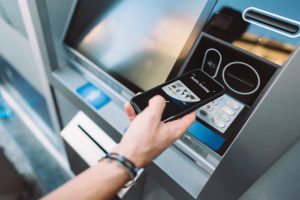The results of the 2021 American Consumer Satisfaction Index (ACSI), a respected national survey of over 15,000 consumers, confirmed what some financial institutions have feared: A shift in consumer expectations resulting from digital banking/efficiencies taking precedence over good ol’ fashioned, friendly, face-to-face customer service. A trend accelerated by a global pandemic and more easily navigated by financial institutions with deeper pockets to invest in digital delivery. Which begs the question: how do banks, both large and small, keep pace with this trend?
It’s not the service that has changed, but rather how “consumer satisfaction” is defined in the current financial services landscape. But, with change comes opportunity. So, it’s time to adapt, adjust, and give consumers the gift of innovation in 2022. Capitalizing on this trend means modernized self-service approaches, digitizing your branch strategy, re-allocating manpower and capital, and leveraging relationships to position yourself to keep pace with the digital consumer.
The rise of digital banking has heightened consumer demand for self-service leading to a simultaneous increase in the popularity of interactive ATMs, better known as ITMs.
Going Phygital — Bridging the Physical and Digital Gap
Although the definition of consumer satisfaction may be changing, areas such as helpfulness of staff and speed of transaction in the branch are still key performance indicators used in the study. The rise of digital banking has heightened consumer demand for self-service leading to a simultaneous increase in the popularity of interactive ATMs, better known as ITMs. This adoption creates an opportunity for banks, particularly those with a culture rooted in strong customer service, to capitalize on those strengths while modernizing their service approach. How? ITMs significantly increase the number of transaction types a consumer can perform at the kiosk and provides them with the option of on-demand video chat with a banking expert. The flexibility of ITMs bridges the gap between strong customer service and the self-service convenience consumers crave through an efficient, personalized solution that maintains the human element.
Digital Branch Transformation
With branch visits remaining low either due to consumer choice or local market laws as the pandemic continues, banks are transforming into 24/7 capable self-service zones by adopting the necessary software and hardware required to achieve digital branch transformation or “smart branches.” They use a design that flips the traditional branch model ratio with the majority of floor space dedicated to 24/7 automated service machines. Leading the charge for branch transformation are core-connected ITMs capable of advanced transactions that allow consumers to access all of their accounts, open a new account, cash checks to the penny, pay on a loan, issue bank check or money orders, etc., all with the option of assistance from a remote teller. This smart branch approach provides account holders with convenience and efficiency while allowing banks to extend branch hours and shrink their cost per transaction by reducing staff and overhead costs.
Leveraging Vendor Relations to Improve Member Touchpoints
The consumer experience is, and long has been, a top priority for any bank. But, managing the many moving parts of a now FinTech driven industry requires time and manpower. The result is tedious, expensive, non-core competencies simultaneously cutting into precious capital and diverting staff hours away from important consumer-facing time. This is where the power of a strong strategic partnership can be a differentiator for banks.
Let’s take your ATM-ITM network as an example. These interfaces are critical, high-volume touchpoints with account holders and, as discussed, a key element in keeping pace with digital consumer expectations. But management of an ATM-ITM fleet is an expensive operational nightmare for any institution that must allocate staff to keep up with hardware repairs, cash management, first & second line maintenance, Reg-E claims, software updates, security patches, and a multitude of other tasks.
Outsourcing the management of your fleet to a trusted vendor partner yields benefits to both the account holder and the institution by relieving staff of ATM management burdens while eliminating capital investment, cutting operational costs, and bolstering your self-service strategy to provide a positive interaction between account holder and institution, even after hours.
Embracing Change
Adjusting to the expectations of the “digital consumer” comes down to institutional flexibility and goal-driven objectives that streamline operations and give consumers the convenience, efficiency, and “satisfaction” they demand from their bank. All it takes is a fresh perspective, a re-imagined service strategy, and the right people and partnerships to help you deliver.











